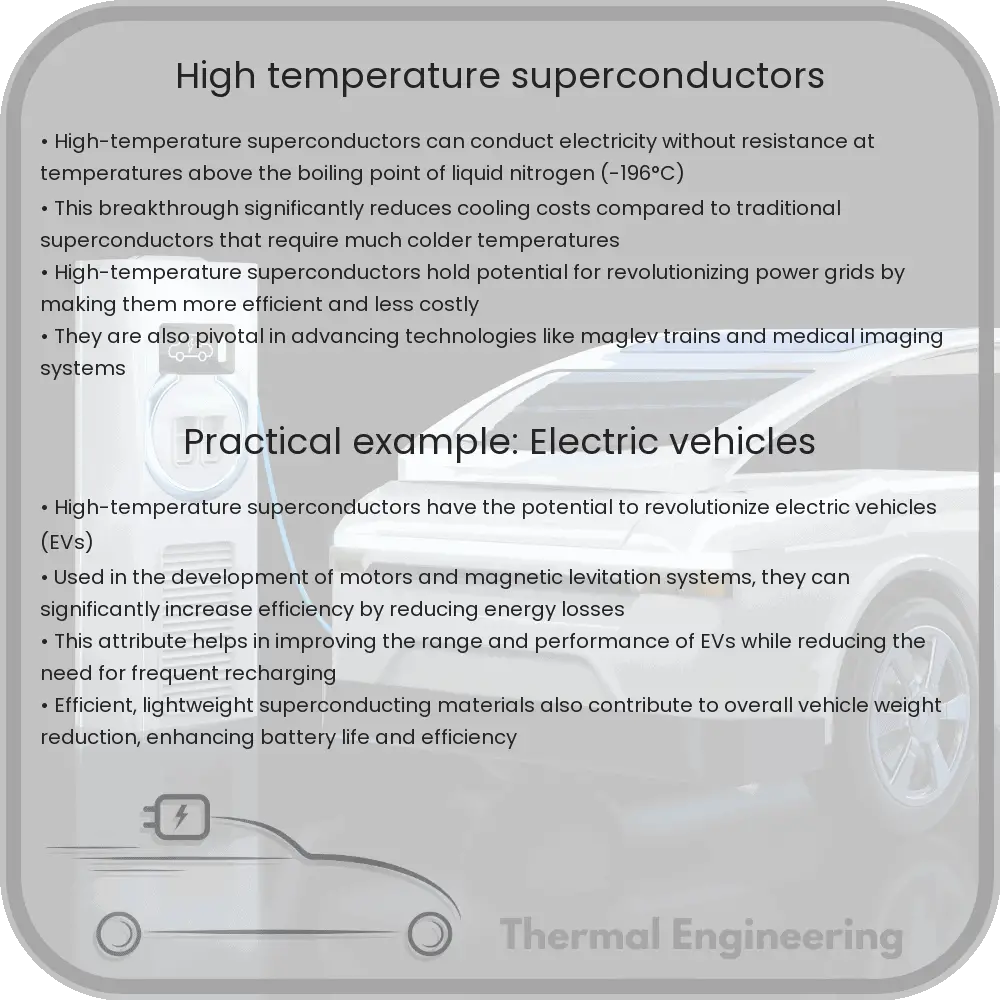Learn about high-temperature superconductors, materials that conduct electricity without resistance at higher critical temperatures, revolutionizing multiple technologies.

Understanding High-Temperature Superconductors
Superconductors are materials that can conduct electricity without resistance when they are cooled to certain critical temperatures. Traditionally, these temperatures have been very low, close to absolute zero (-273.15°C). However, high-temperature superconductors (HTS) operate at significantly higher temperatures, making them more practical for a broader range of applications.
Discovery and Types of High-Temperature Superconductors
High-temperature superconductors were first discovered in 1986 by IBM researchers Georg Bednorz and K. Alex Müller, who found that certain ceramic copper-oxide materials exhibited superconductivity at temperatures higher than previously thought possible. This discovery won them the Nobel Prize in Physics in 1987. The main families of high-temperature superconductors include:
- YBCO (Yttrium Barium Copper Oxide) with a critical temperature of about 92 K (-181.15°C)
- BSCCO (Bismuth Strontium Calcium Copper Oxide) and
- TBCCO (Thallium Barium Calcium Copper Oxide) with higher critical temperatures still.
The discovery of these new superconducting materials has significant implications for various fields, from medical technologies to transportation systems.
How High-Temperature Superconductors Work
Superconductors work based on the principle of Cooper pairs, where two electrons interact weakly through lattice vibrations and pair up to flow without energy loss. In high-temperature superconductors, despite ongoing research, the exact mechanism remains complex and somewhat elusive. However, it is primarily attributed to the electron pairing mediated through interactions with magnetic fluctuations in the copper-oxide planes of the material.
Applications of High-Temperature Superconductors
High-temperature superconductors hold the potential for revolutionizing many technologies due to their efficiency and power capabilities. Some of the promising applications include:
- Magnetic Resonance Imaging (MRI): Superconducting magnets made from HTS materials can produce highly uniform and strong magnetic fields, essential for high-resolution imaging.
- Power Cables: Superconducting materials can transmit electricity with negligible losses, potentially reducing energy dissipation in power grids.
- Particle Accelerators: Superior magnetic fields generated by superconductors can be used to steer and accelerate particles more efficiently in research facilities.
- Maglev Trains: Magnetically levitated trains can use HTS for efficient, high-speed transportation systems.
However, while high-temperature superconductors work at higher temperatures than conventional superconductors, they still require cooling, typically using liquid nitrogen, which has a boiling point of 77 K (-196.15°C). This requirement is a challenge and an area of active research.
The Future of High-Temperature Superconductors
The ongoing research aims to develop superconductors that can operate at even higher temperatures, ideally close to room temperature. Such advancements could further reduce the reliance on complex cooling systems and pave the way for more widespread adoption of superconductor-based technologies. Researchers are also exploring novel materials and compositions that may host superconductivity at higher temperatures, driving forward innovative applications across science and industry.
In conclusion, high-temperature superconductors continue to be a vibrant field of scientific inquiry and engineering application, promising a future where energy-efficient technologies are more readily accessible and effective across multiple domains.